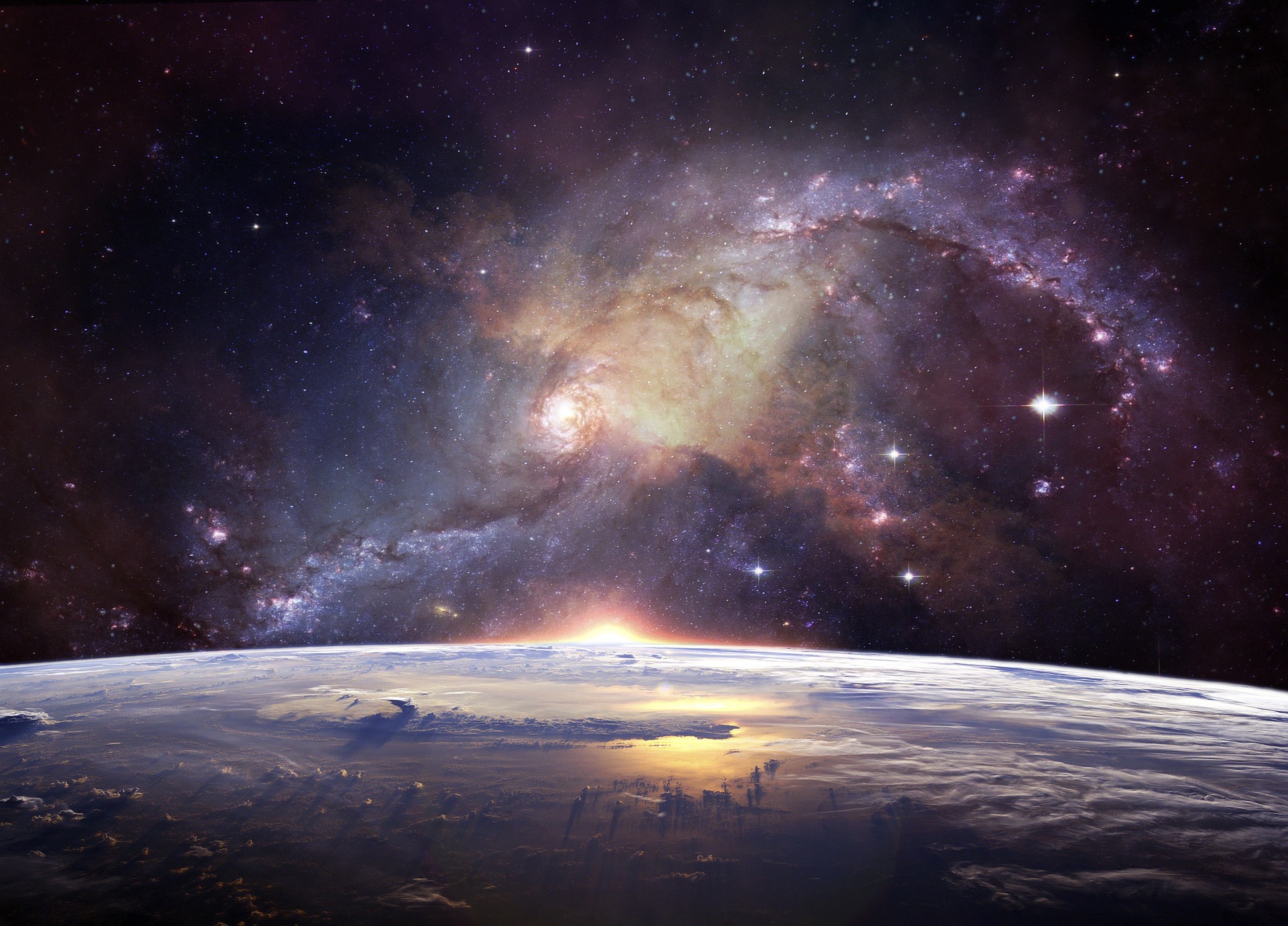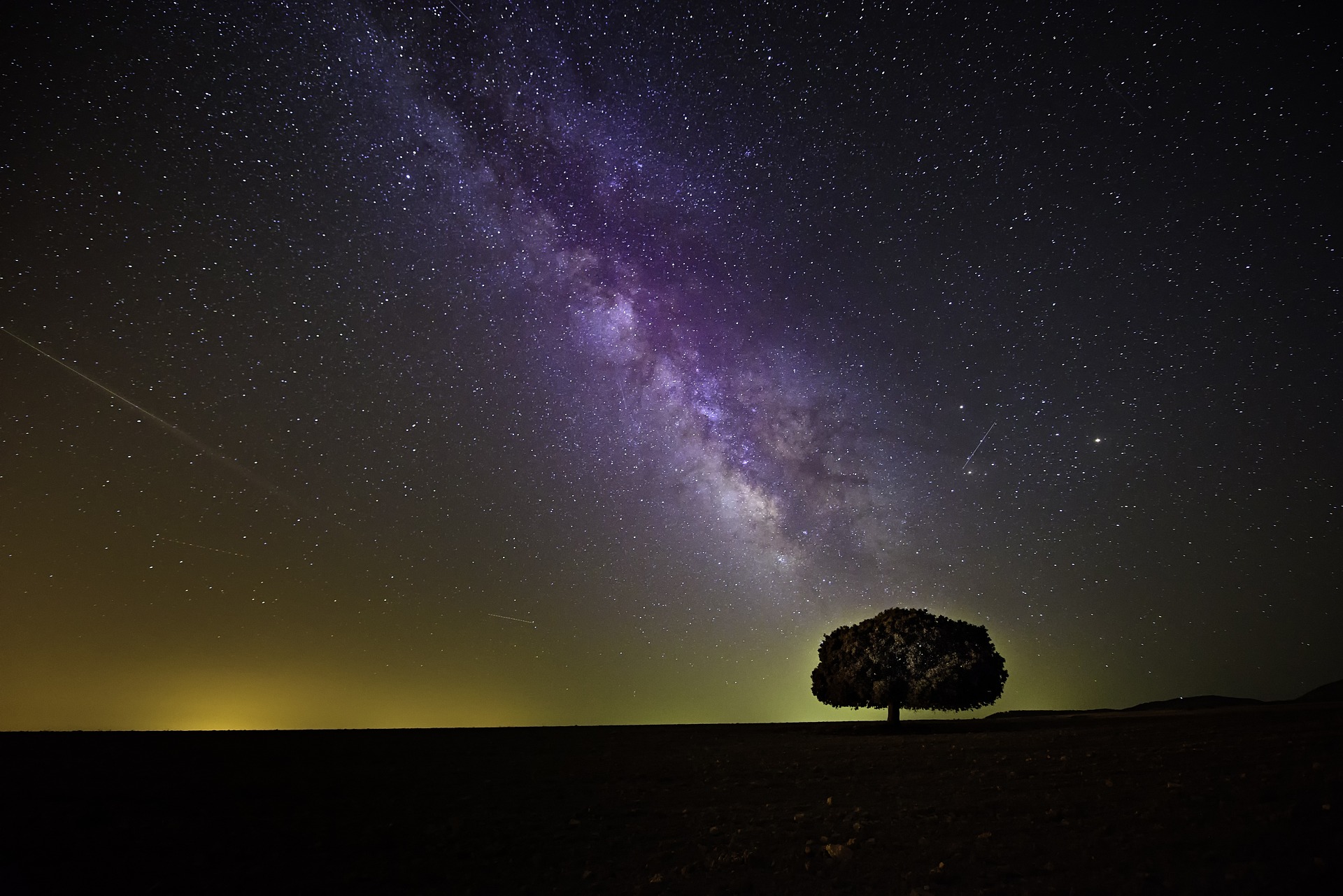Stardust and eternity – 3.2.3
The Milky Way (and Light at night)
At night, in particularly dark locations – when the moonlight is not too bright – we can spot above us a wide, irregular, uneven band of faint, hazy light arching across that extends from horizon to horizon in the sky. This wide cloud-like object is our Galaxy, known as the Milky Way – one of the hundreds of billions of galaxies in our Universe. Its name derives from Greek mythology and is attributed to the goddess Hera, wife of Zeus, who sprayed her mother’s milk into the sky while breastfeeding Heracles.
Although the Milky Way is the only galaxy that astronomers can study most in detail – as we are enclosed within it – its actual shape and structure have always eluded us; however, it is now widely agreed that it should be a barred spiral galaxy, just like its neighbouring twin galaxy Andromeda (M31 in the Messier catalogue). The Milky Way’s blurred light originates from the countless unresolved stars located along the galactic plane, which we see outlined from a position inside the galactic disc, inclined at about 60° to the ecliptic – the plane of Earth’s orbit. The brightest region, which lies in the direction of the constellation Sagittarius, is where the stars are denstest; it corresponds to the galactic centre, or the central “bulge” of our barred spiral galaxy. Theoretically, this region of the sky – although 27000 light years away – should be much brighter than it appears to us. However, apart from light pollution, we only see a faint portion of it: this is due to the fact that the dust in the interstellar medium on the line of sight between us and the central bulge, absorbs much of the visible light coming from there. Its properties are therefore best studied using observations in the infrared and radio regions of the electromagnetic spectrum, which are not extinguished by dust.
The visibility of the Milky Way is significantly reduced by light pollution or by moonlight. It should be visible if the limiting apparent magnitude for naked eye visibility is about +5 or higher (the limiting apparent magnitude is the brightness of a star on an reverse logarithmic scale: the brighter the star, the lower its magnitude. This implies that the Milky Way is difficult to be observed from brightly lit urban or suburban areas: indeed, in these locations, the limiting magnitude will only be around +3 or +4. According to a study published in 2016 by Falchi et al. in Science Advances, “The new world atlas of artificial night sky brightness”, the Milky Way is now hidden from more than a third of humanity – including 60% of Europeans. In Europe, the countries in which the Milky Way is mostly hidden by light pollution are San Marino (100%), Malta (89%), and Belgium (51%). Among the G20 countries, Italy is the most light-polluted.

Further resources
Links below will redirect you to external websites. In accordance with the European data protection declarations, we would like to point out that by clicking on these links you may send data to external providers. We cannot prevent that.
Images
![]() The Appearance of the Milky Way in the Night Sky
The Appearance of the Milky Way in the Night Sky
![]() Milky Way and Zodiacal Light over Chile (Roman Ponča, Masaryk U.)
Milky Way and Zodiacal Light over Chile (Roman Ponča, Masaryk U.)
![]() The Milky Way over Monument Valley (Tom Masterson)
The Milky Way over Monument Valley (Tom Masterson)
![]() The Milky Way and the location of its central black hole as viewed from the Atacama Large Millimeter/submillimeter Array (ESO/J. F. Salgado, EHT Collaboration)
The Milky Way and the location of its central black hole as viewed from the Atacama Large Millimeter/submillimeter Array (ESO/J. F. Salgado, EHT Collaboration)
Videos
![]() A Colorado Town Goes Dark To Let The Milky Way Shine Bright (Today)
A Colorado Town Goes Dark To Let The Milky Way Shine Bright (Today)
On line resources
![]() Milky Way no longer visible to one third of humanity, light pollution atlas shows (The Guardian)
Milky Way no longer visible to one third of humanity, light pollution atlas shows (The Guardian)
Further readings
![]() Astronomy of the Milky Way: The Observer’s Guide to the Northern Sky (Mike Inglis)
Astronomy of the Milky Way: The Observer’s Guide to the Northern Sky (Mike Inglis)
Teaching Material
For Kids

